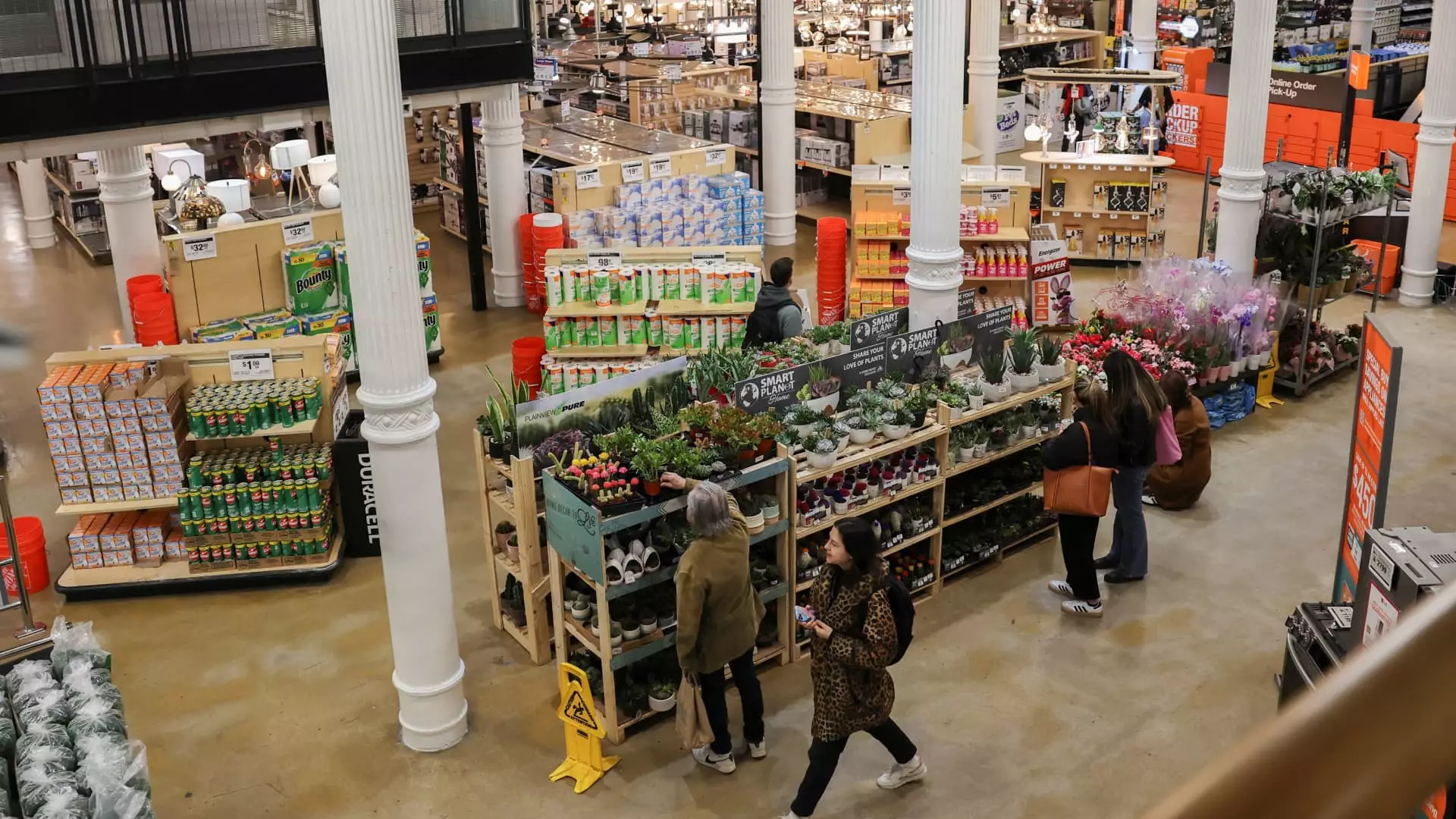The home improvement retail sector, and Home Depot in particular, find themselves at a crossroads as economic indicators waver uncertainly. Despite occasional upticks in stock prices, the long-term market trends suggest troubling tides on the horizon. As price targets shift downward and consumer sentiment wanes, it’s essential to delve deeper into the myriad factors that could scrutinize Home Depot’s future, especially as we advance into 2025.
Why Consumer Sentiment Matters More Than You Think
Piper Sandler’s recent cut in Home Depot’s price target reflects a crucial sentiment shift among high-income earners. Statistics show a significant decline in consumer enthusiasm among the upper echelon, particularly during February and March 2023. This drop, tied for the most significant shift in 15 years, rings alarm bells as it threatens the lifeblood of big-ticket renovations that typically fuel companies like Home Depot. High-income earners, who historically drive substantial home improvement spending, are now exhibiting cautious behavior, which could instantly translate to stunted sales growth.
The figures point to a multifaceted issue; as consumer sentiment deteriorates, spending among affluent individuals often foreshadows market trends, resulting in a ripple effect across various sectors, including home improvement. This sensitivity to economic conditions should not be dismissed—as it underscores how interlinked consumer behavior is with retail performance. Consequently, stakeholders must reckon with these nuances rather than relying solely on optimistic projections.
Tariffs and Economic Uncertainty: The Double-Edged Sword
One cannot overlook the longstanding environmental factors affecting Home Depot, notably tariffs, which have become a recurrent theme in economic discourse. CEO Ted Decker’s nonchalant attitude towards tariffs, stating, “We’ve had tariffs forever,” speaks volumes about the company’s resilience yet may also underplay a significant concern. Economic environments fluctuate drastically, and undercurrent elements like tariffs could lead to inflated costs and squeezed margins, which in turn affect pricing strategies and, ultimately, customer behavior.
With the economic landscape marked by uncertainty, stakeholders must engage in proactive measures. The potential for upcoming tariffs to impact consumer choices could compound the pressures already facing Home Depot. Businesses in the home improvement sector are already feeling the heat, which raises questions regarding how sustainably they can grow amidst these conditions. Highlighting such challenges is critical—businesses must be prepared to adapt, as rigid structures often crumble under pressure.
Reassuring Long-Term Outlooks: Are They Justified?
Leading analysts remain cautiously optimistic about Home Depot’s long-term trajectory, suggesting the possibility of stabilization as mortgage rates are projected to decline. However, one must approach these forecasts with a critical mind. Are we expecting a revival, or merely wishing for one? The reminders of the housing market’s rise and fall underscore the unpredictability; thus one must consider whether these analysts are painfully skewed by the inherent optimism that often envelops financial projections.
While the NAHB’s Remodel Market Index hints at possible better days ahead, the link between higher remodeling expectations and improving microeconomic factors must be entirely supported by tangible data. In the face of unpredictability, positive affirmations may generate buzz, but real change requires a solid foundation backed by consumer demand and market health.
The Aging Home Dilemma: Potential Catalyst or Detriment?
Analysts, including those at Mizuho, highlight the aging housing stock burdening American homeowners, characterized by deteriorating facilities in older homes. This segment of the market could signal growth potential, particularly for services aimed at renovation and repair. However, the bleak reality is that many consumers may prioritize urgent repairs over discretionary upgrades, fundamentally altering the landscape of renovation spending.
As individuals tighten their financial belts in uncertain conditions, the expectation of continued renovation exuberance could easily fall short. Therefore, while the demographic trends favor home improvements, the immediacy of necessity against the backdrop of lingering economic challenges must be integrated into Home Depot’s strategic planning.
Investing in Growth: A Necessary Shift?
In light of these challenges, having a strategic investment plan is indispensable. Jim Cramer and the Analysts at Barclays hold a tenable perspective, recognizing that market recovery hinges on powerful external influences. Home Depot must not only respond to immediate consumer sentiment but also maintain a commitment to growth and innovation in product offerings and customer experiences.
Given the competitive pressures from rivals like Lowe’s, Home Depot must position itself strategically. Loyalty-building campaigns, customer service enhancements, and diversification of product lines are paramount for sustained growth. Engaging consumers on an emotional level while delivering tangible value may very well be what separates leaders from followers in the ever-evolving landscape of home improvement retail. Understanding the significance of aggression in the face of adversity will dictate whether Home Depot solidifies its position or falters amidst the chaos.

